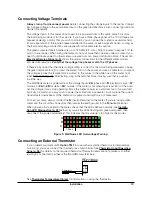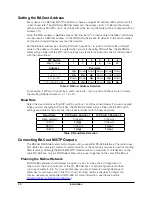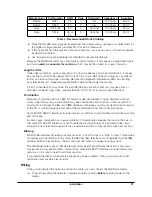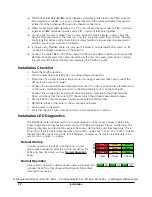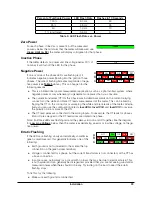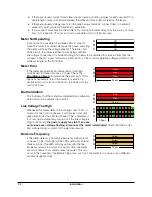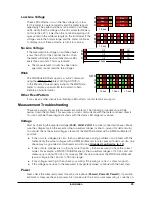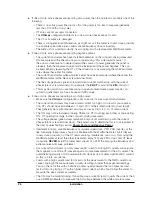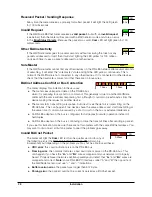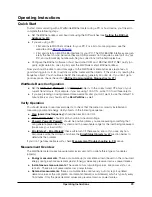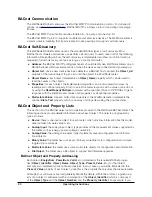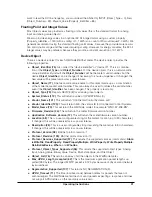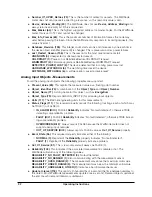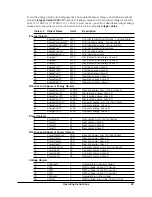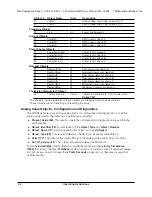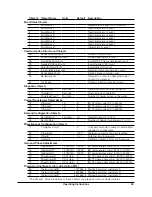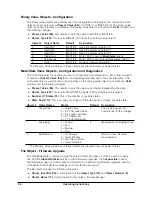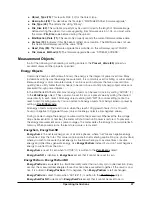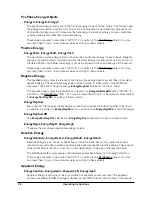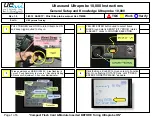
30
Operating Instructions
BACnet Communication
The WattNode BACnet meter uses the BACnet MS/TP communication protocol. For full specifi-
cations, see
http://www.bacnet.org
. BACnet MS/TP is a binary protocol consisting of message
frames.
The BACnet MS/TP specification requires 8 data bits, no parity, and one stop bit.
The BACnet MS/TP protocol supports multiple master and slave devices. The WattNode meter is
a master device, meaning that it participates in token passing and supports self-discovery.
BACnet Self-Discovery
The WattNode BACnet meter supports the standard BACnet types of self-discovery. Most
BACnet host software and devices can perform self-discovery to read some or all of the following
information. Depending on how the self-discovery is implemented and how much information is
requested, full self-discovery can take as long as a couple of minutes.
●
Address
: the BACnet MS/TP polling mechanism should identify new WattNode meters on an
RS-485 subnet within several seconds of when the devices are connected and powered up.
●
Object List
: once a new device has been detected, a BACnet host can read the
Object_List
property of the device object to get a list of all the objects in a WattNode meter.
●
Object Names
: each object implements an
Object_Name
property which can be used to
read the names of the objects.
●
Properties
: for each object, the implemented properties can be discovered two ways: by
reading each optional property in turn to see if the meter responds with a value or an error; or
by using the
ReadPropertyMultiple
command with a specifier of ALL or OPTIONAL to get a
response with the identifiers and values of all properties or all optional properties.
●
Multi-state Values
: for each multi-state value object, the WattNode meter implements the
optional
State_Text
property, which is an array of strings describing the possible states.
BACnet Object and Property Lists
This section lists the BACnet objects and properties provided in the WattNode BACnet meter. The
following sections provide detailed information about each object. The objects are grouped by
type as follows:
●
Device
: there is one device object for each meter, which provides information like the model,
serial number, firmware version, etc.
●
Analog Input
: the analog input object type provides all the measurement values supported by
the meter, such as energy, power, voltage, current, etc.
●
Analog Value
: the analog value object type implements several configuration and informa-
tional objects.
●
Binary Value
: the meter has a small set of binary value objects for configuration and simple
toggle-style commands.
●
Multi-state Value
: the meter uses some multi-state objects for configuration and information.
●
File Object
: the meter uses a file object to support field firmware upgrades.
BACnet Object and Property Addressing
Each object (
EnergySum
,
PowerSum
,
VoltA
, etc.) implements the required BACnet proper-
ties (
Object_Identifier
,
Object_Name
,
Object_Type
,
Present_Value
, etc.) for that object
and may also implement some optional properties. In most cases, you will be interested in the
Present_Value
property of each object, since this is the property that provides the measurements.
Although your software or host will generally handle the details, within the protocol, a given prop-
erty of an object is addressed with a combination of the
Object_Identifier
(which is composed
of the
Object_Type
and the
Object_Number
) and the
Property_Identifier
. For example, if you




